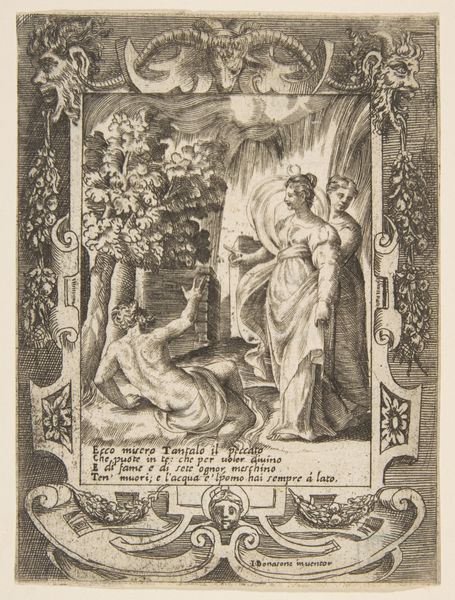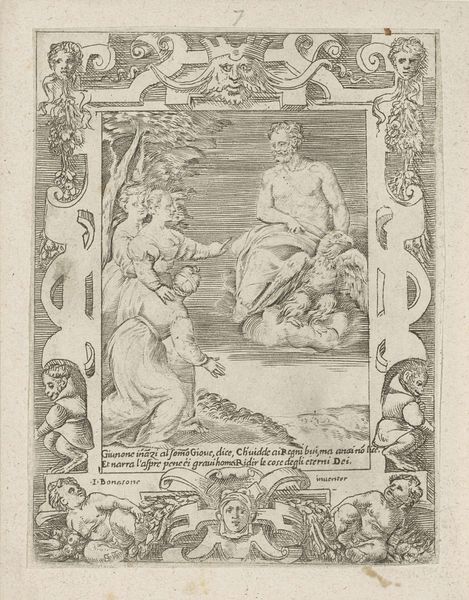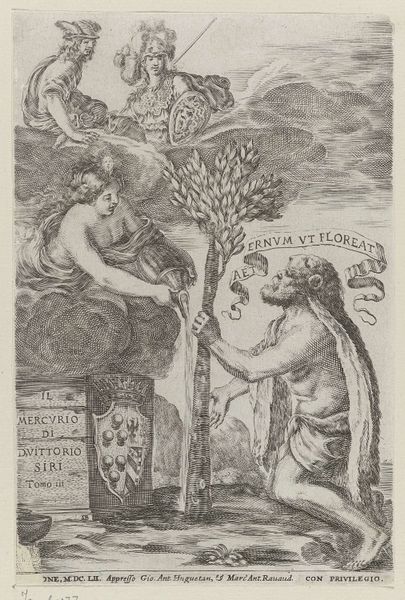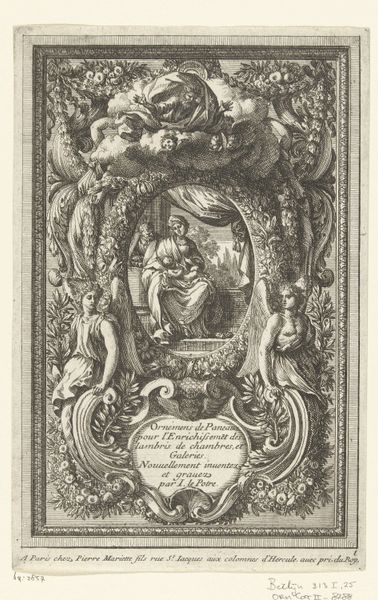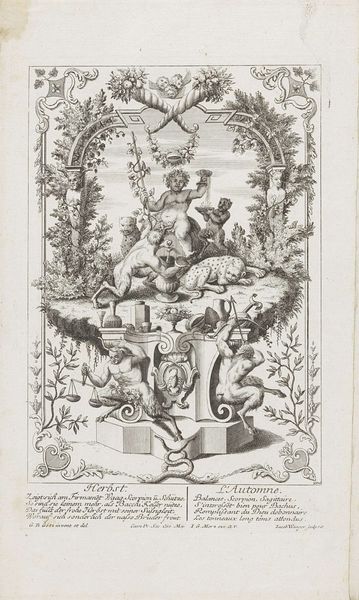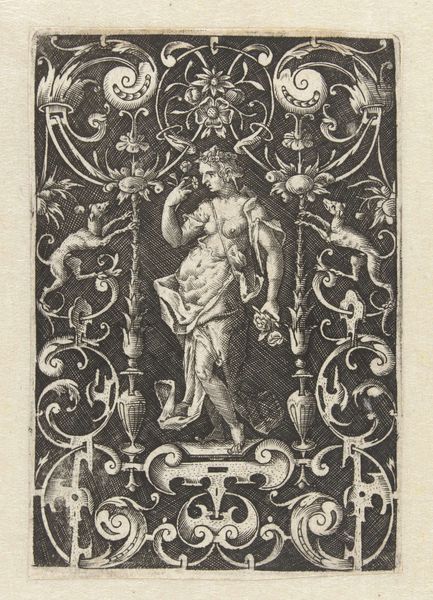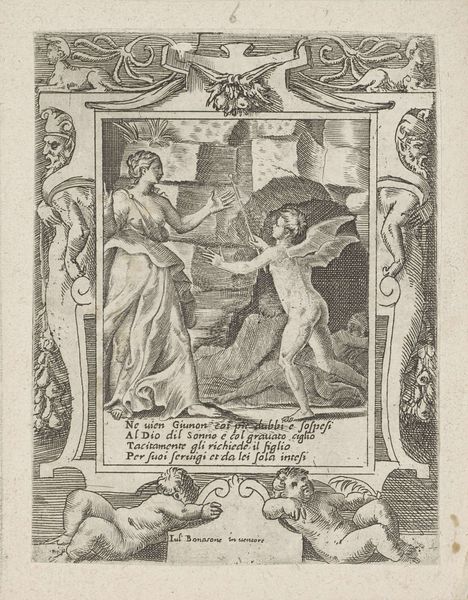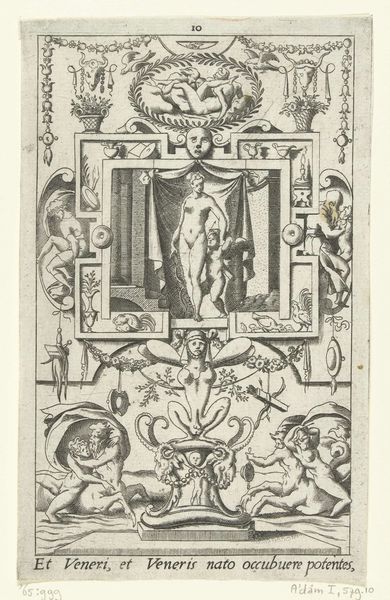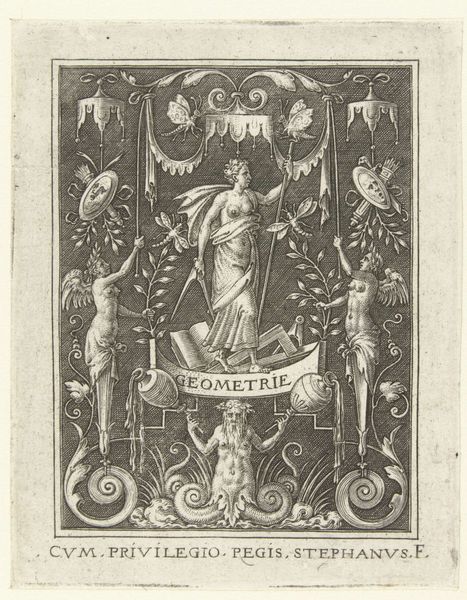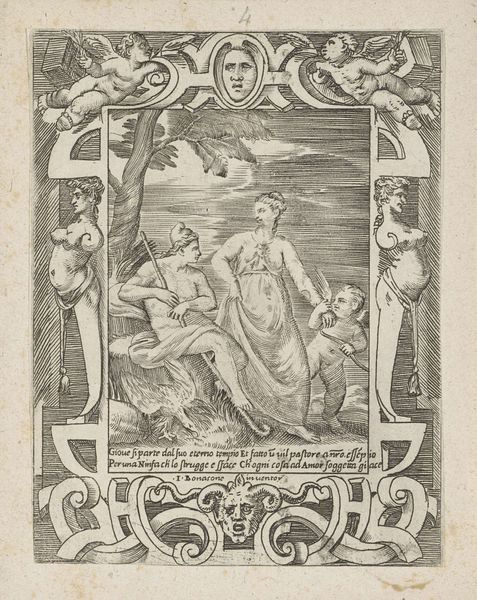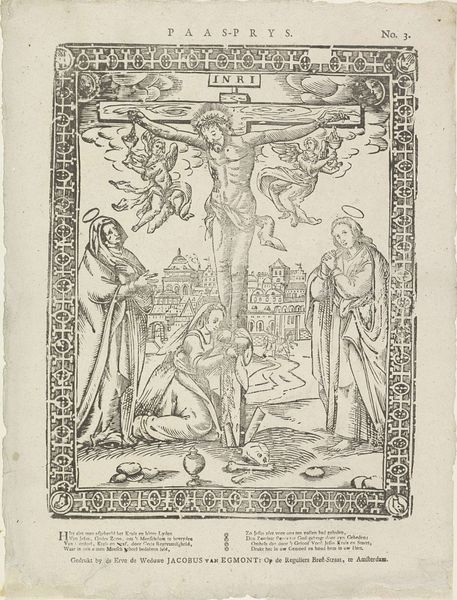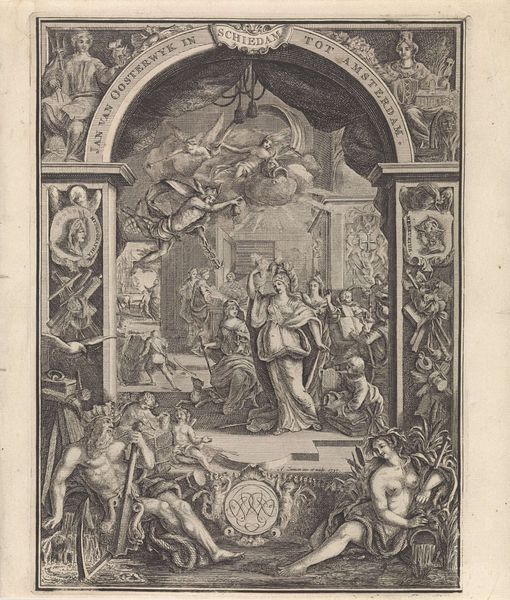
drawing, print, engraving
#
drawing
#
pen drawing
# print
#
old engraving style
#
mannerism
#
figuration
#
line
#
history-painting
#
italian-renaissance
#
nude
#
engraving
Dimensions: height 134 mm, width 100 mm
Copyright: Rijks Museum: Open Domain
Curator: This intriguing engraving is "Tantalus speaks to Diana," an artwork created by Giulio Bonasone sometime between 1501 and 1580. It’s currently housed right here in the Rijksmuseum. What strikes you first about it? Editor: The starkness of the line work immediately draws the eye. It feels incredibly tense; there's an undeniable sense of suffering in that figure's posture. You feel the frustration coming off of the engraving. Curator: Indeed, Bonasone, known for his work in the Mannerist style, demonstrates an interesting approach to printmaking. It's fascinating how the choice of material - this being an engraving on, most likely, paper – affects how we receive this depiction of Tantalus. The very act of incising lines creates a graphic immediacy, almost mirroring Tantalus's desperation. Editor: Considering that desperation, I wonder about the market this piece was intended for and how it reflects the cultural anxieties around power, transgression, and punishment in 16th-century society. The tale of Tantalus, eternally tormented, speaks volumes about the consequences of defying the divine order and reveals how institutions were working at that time. Curator: The visual language is very intentional, then? You have Bonasone carefully etching away at the metal plate to produce something for this kind of didactic purpose. This wasn’t, say, a quickly sketched caricature, but a labor-intensive piece. We can consider how prints operated as commodities, both transmitting cultural values and reflecting on artisanal skill, but more interestingly what do you make of Diana being here? Is she showing Tantalus an option to escape his fate? Editor: She acts as the instrument of divine justice but stands separate, embodying power and unattainability. Her presence speaks to the complex dynamics between gods and mortals and their effect in political discussions from back then. We tend to lose track that art such as this are visual documents that represent opinions and ideologies. Curator: Agreed, and those ornaments along the sides frame the drama almost like it's a performance playing to a cultural theater. Editor: Thinking about it further, the image really pulls apart notions of control and authority as a result of what he cannot reach, showing us the inner machinations behind punishment in the high court! Curator: Definitely gives you pause when pondering the intersection between the artistic and the historical forces at play, even within this single print.
Comments
No comments
Be the first to comment and join the conversation on the ultimate creative platform.
